Favorites of Foliar Color
Don’t get me wrong – flowers are fabulous, and I’ve planted my share of them. But there is something really special to be said for plants with colorful leaves. Properly chosen, carefully placed and cared for regularly, they keep our gardens perky and beautiful for months at a time.
With that in mind, I present five of my favorites for summertime color. These are all plants that I have, or have had, in our landscape over recent years. Most of us use them as annuals, buying new plants every spring.
• Copper plants. Where have these been the past 15 or 20 years? We used them in abundance in the 70s, 80s and into the 90s, but then they seemed to get put on the shelf. These are fabulous sources of summertime color, and the reds just get more intense as autumn approaches. Give them full sun, and pinch out their growing tips if they start to grow too tall. You’re likely to find a few new types in the market, too, so let’s get ‘em back on our bandwagons!
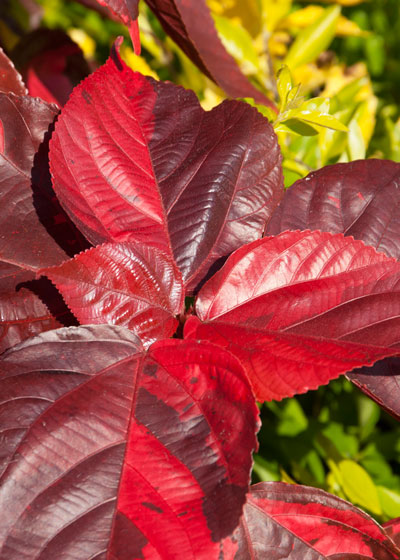
Copper plants in mid-summer’s sun.
• Coleus. These have picked up the slack where we used to grow copper plants. Once relegated only to gardens in shade, breeders have given us types that can stand up to the sun. Most types were also selected because they were “shy bloomers.” Flowers stop the production of new leaves, and thereby end the colorful season for coleus. Should your plants still try to bloom, pinch out the flower buds as soon as you see them.

Coleus and variegated tapioca add color and excitement, even though neither produces flowers.
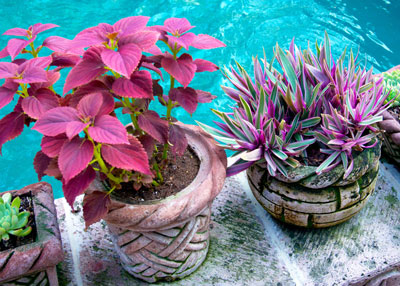
Coleus provides contrast to blue pool water at Joe T. Garcia’s Restaurant in Fort Worth, while variegated Moses-in-the-cradle grows alongside.
• Variegated tapioca. Crazy, isn’t it, that this garden beauty is related to a plant that’s a foodstuff? This one’s been in the market for 20 years, and still it’s not seen often enough. It can grow to be 4 or 5 feet tall, so give it ample room. Give it full sun for most brilliant colors.
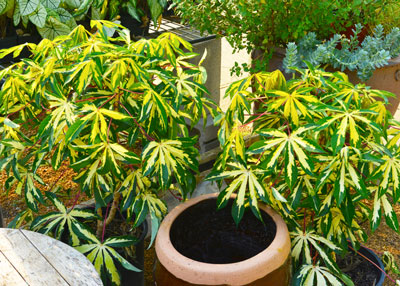
The brighter the sunlight, the brighter the yellow of variegated tapioca’s leaves.
• Iresine, or bloodleaf. I admit it. This one I put in just for me. I’ve loved this plant all of my gardening life. I had it as a kid, then I didn’t see it for 35 years. Now breeders are working with it, and you’ll see it fairly often – also its yellow-leafed cousin with another great name (chicken gizzard plant). This is my plant in the photo, and it’s growing in a decorative pot alongside our driveway. It’s a refined grower, unlike most of the others I’ve mentioned, so I do pinch it back and take it into the greenhouse over the winter. It’s been with me for 6 or 8 years.
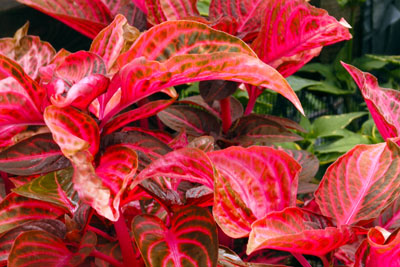
Few plants have leaves any more intensely red than bloodleaf (Iresine).
• Crotons. These are big-time favorites with commercial landscapers. You’ll see them at office buildings, parks and hotels, even in finer home gardens. There are many types in the nursery industry in all shades of red, orange, yellow and green. They handle all but the hottest afternoon sun and just get more colorful. Mine have been in this spot in our landscape every year for the past decade. Yes, I take these into the greenhouse in winter. (I can’t stand to see them die with first frost.) Some of mine have grown to be 5 and 6 feet tall.
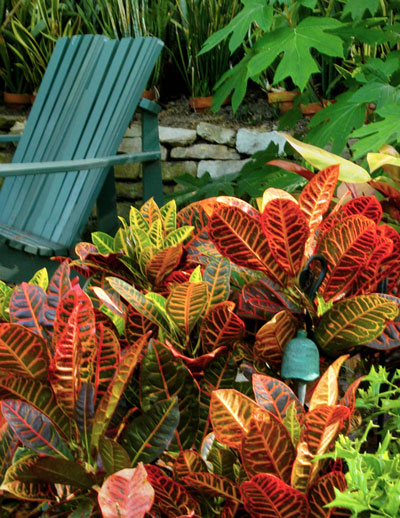
Crotons have become immensely popular in commercial, residential landscaping color.
